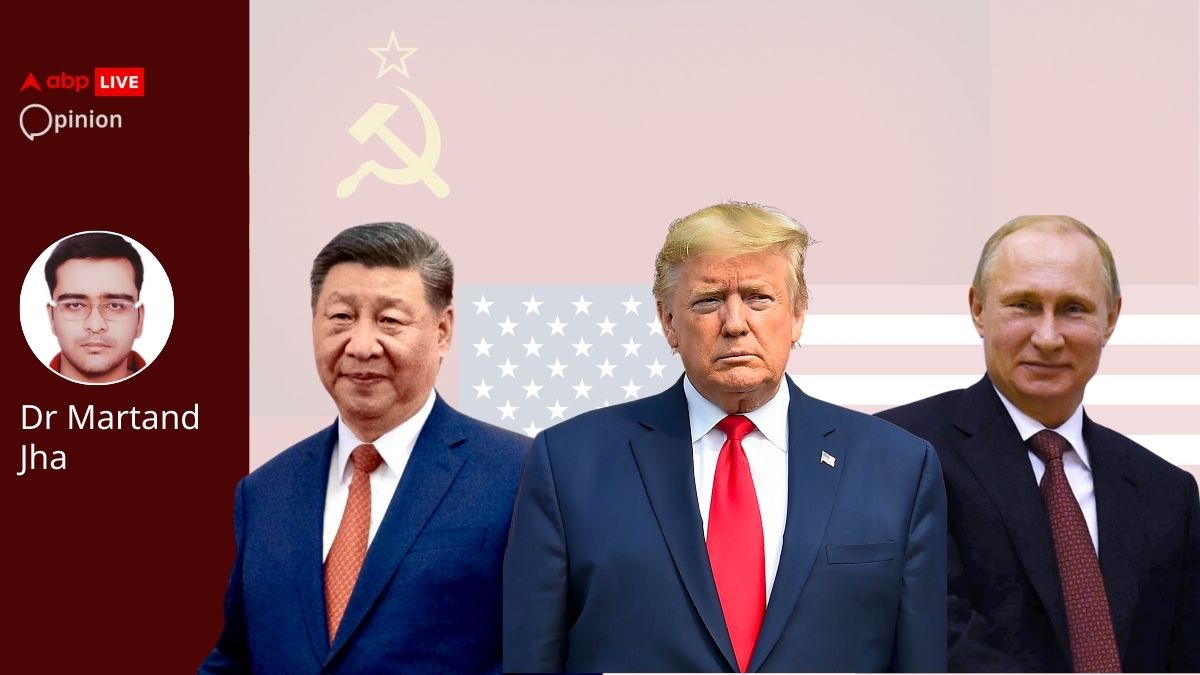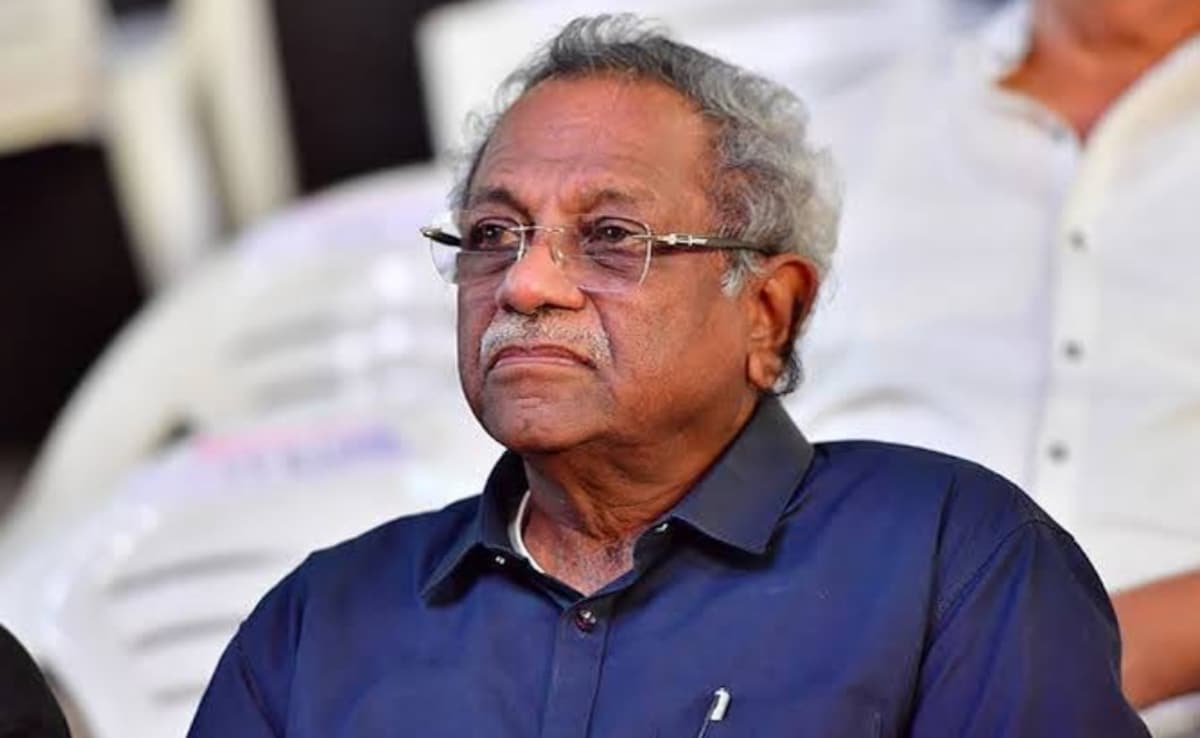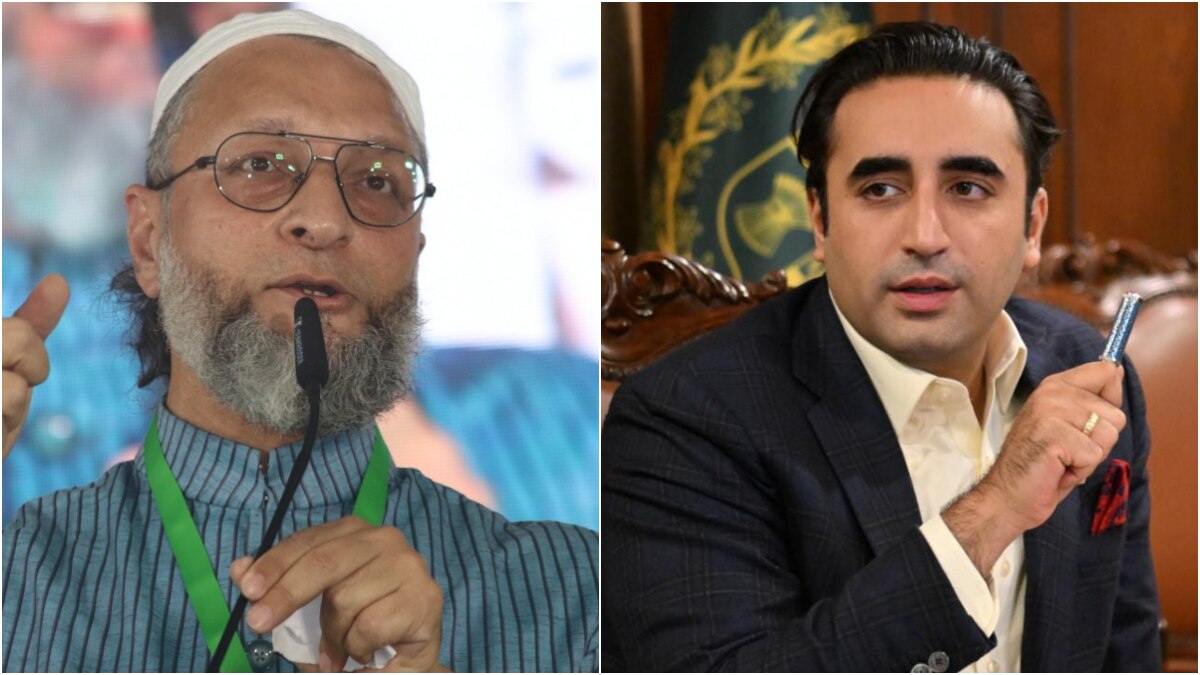<p><span style=”font-weight: 400;”>It has been 80 years since the term ‘Cold War’ entered the global lexicon to describe the period of geopolitical tensions and nuclear anxiety that took root in the aftermath of World War II. While it was first used by the famous writer George Orwell in a 1945 essay, it is Bernard Baruch, a prominent American financier and adviser to US presidents from Woodrow Wilson to Harry S. Truman, who popularised the term after using it in a 1947 speech. Baruch used the term to describe the escalating hostility and political rivalry between two key World War II allies — the United States and the erstwhile Soviet Union. Although they had fought together to defeat Nazi Germany and the other Axis powers, deep ideological and strategic differences began to emerge immediately after the war. This conflict, characterised not by open warfare but by political tension, military competition, and proxy conflicts, came to define the second half of the 20th century.</span></p>
<p><span style=”font-weight: 400;”>The Cold War period largely spans from the end of World War II in 1945 until the dissolution of the Soviet Union in 1991. While the US and the USSR never engaged in direct military conflict, their competition manifested in numerous confrontations, including the Berlin Blockade, the Korean War, the Vietnam War, the Cuban Missile Crisis, and the Soviet invasion of Afghanistan. These incidents often brought the world perilously close to a full-scale nuclear war.</span></p>
<p><span style=”font-weight: 400;”>The Cold War introduced a bipolar world order, splitting global power between two ideologically opposed camps: the capitalist, democratic West led by the United States, and the communist, authoritarian East led by the Soviet Union. This ideological divide extended across nations and influenced global alliances. The West formed the North Atlantic Treaty Organization (NATO) in 1949, while the East responded with the Warsaw Pact in 1955. These alliances were not just military groupings; they symbolised the commitment of their members to defend their respective ideological systems.</span></p>
<p><a href=”https://news.abplive.com/blog/opinion-neo-nationalist-america-for-india-1767647″><strong>ALSO READ | A Neo-Nationalist America For India — A Key Takeaway From Vance Visit</strong></a></p>
<p><span style=”font-weight: 400;”>Tensions were evident even before the Cold War formally began, particularly during postwar negotiations at Yalta and Potsdam. The Soviet Union’s aim to establish pro-communist regimes in eastern Europe clashed with the Western commitment to self-determination and democratic governance. These differences set the stage for the enduring struggle between the two superpowers.</span></p>
<p><span style=”font-weight: 400;”>American foreign policy shifted dramatically with the announcement of the </span><strong>Truman Doctrine</strong><span style=”font-weight: 400;”> in 1947, which pledged support to countries resisting communist subversion. That same year, the </span><strong>Marshall Plan</strong><span style=”font-weight: 400;”> provided over $12 billion in economic assistance to rebuild western Europe, aiming to prevent economic instability that might lead to the rise of communism. These efforts marked the United States’ transition from isolationism to a proactive global leadership role in countering Soviet influence.</span></p>
<p><span style=”font-weight: 400;”>The Cold War also marked a turning point in the practical application of the realist theory in international relations. Realism, as a school of thought, prioritises power, national interest, and state sovereignty. Cold War politics were dominated by concepts like deterrence (especially nuclear deterrence), balance of power, and the strategic pursuit of military and economic superiority. The entire international system came to revolve around the actions and reactions of these two superpowers, each seeking dominance and security.</span></p>
<p><span style=”font-weight: 400;”>Ideological rivalry fuelled the Cold War at every level. The world was seen through binary oppositions — democracy versus communism, freedom versus authoritarianism, ‘first world’ versus ‘second world’. This division shaped how nations aligned themselves, how wars were fought, and how global institutions operated. It also led to cultural and technological competition, most famously seen in the </span><strong>Space Race</strong><span style=”font-weight: 400;”>, where the US and the USSR vied to achieve dominance in space exploration.</span></p>
<p><span style=”font-weight: 400;”>At the heart of this rivalry was the pursuit of hegemony — the ability of a single state to influence or control global norms, rules, and systems. Scholars like Robert Keohane and Joseph Nye have examined this concept in depth, noting that hegemony is not only about military and economic strength but also about the ability to create and enforce international norms. Hegemony means shaping the global order in one’s own image, and both the US and the USSR were deeply invested in this struggle.</span></p>
<p><span style=”font-weight: 400;”>As both superpowers sought military superiority, the Cold War fuelled an unprecedented arms race. Both sides amassed large stockpiles of nuclear weapons, developed long-range missile systems, and invested in space and surveillance technologies. This race extended into the scientific and technological realms, where pioneers like Wernher von Braun and Sergei Korolev played vital roles in advancing their nations’ strategic capabilities.</span></p>
<p><a href=”https://news.abplive.com/blog/opinion-trump-s-tariff-whip-may-help-resurrect-wto-s-trade-dispute-body-abpp-1755868″><strong>ALSO READ | The West Once Wanted WTO Dead. Now It’s Looking At The Trade Body To Counter Trump’s Tariff Whip</strong></a></p>
<h3><strong>Relevance Of The Cold War To The Present Day</strong></h3>
<p><span style=”font-weight: 400;”>Although the Cold War officially ended with the collapse of the Soviet Union in 1991, its legacy continues to influence current global affairs in significant ways.</span></p>
<p><span style=”font-weight: 400;”>First, the </span><strong>strategic rivalry between the great powers</strong><span style=”font-weight: 400;”> has not disappeared — it has merely transformed. The United States remains a global superpower, but it now faces new challenges from other rising states, especially </span><strong>China</strong><span style=”font-weight: 400;”>. The US-China relationship today mirrors many aspects of the Cold War: ideological differences, trade disputes, military competition (including in space and cyber domains), and influence battles in regions like the Indo-Pacific, Africa, and Latin America.</span></p>
<p><span style=”font-weight: 400;”>Second, </span><strong>Russia</strong><span style=”font-weight: 400;”>, though no longer the Soviet Union, has reasserted itself on the global stage, particularly under Vladimir Putin. Its actions — such as the annexation of Crimea in 2014, involvement in the Syrian civil war, and the 2022 full-scale invasion of Ukraine — have reignited concerns about a new kind of East-West confrontation. NATO, once considered by some as a relic of the Cold War, has found renewed relevance and expansion in response to Russian aggression.</span></p>
<p><span style=”font-weight: 400;”>Third, Cold War-style proxy conflicts and information warfare are again becoming common. Instead of clear-cut battlefields, today’s competition often plays out through </span><strong>cyberattacks, disinformation campaigns, economic sanctions, and soft power influence</strong><span style=”font-weight: 400;”>. Social media, state-sponsored propaganda, and cyber-espionage channels are modern tools of conflict that echo Cold War-era psychological and cultural operations.</span></p>
<p><span style=”font-weight: 400;”>Furthermore, </span><strong>nuclear weapons and arms control</strong><span style=”font-weight: 400;”> remain pressing issues. Treaties such as the INF (Intermediate-Range Nuclear Forces) Treaty and START (Strategic Arms Reduction Treaty), which were crucial during the Cold War, are now either weakened or abandoned. This has raised fears of a new arms race without the constraints that once kept competition in check.</span></p>
<p><span style=”font-weight: 400;”>Finally, the Cold War provides a crucial historical lens through which current policymakers, analysts, and citizens can understand </span><strong>how rivalries escalate</strong><span style=”font-weight: 400;”>, how ideology drives global alignment, and how diplomacy, deterrence, and multilateral institutions can prevent large-scale conflict. In a multipolar world with new technological threats, the Cold War serves as both a cautionary tale and a strategic guide.</span></p>
<p><span style=”font-weight: 400;”>As the world experiences renewed great-power competition, ongoing proxy conflicts, and fragile international cooperation, the lessons of the Cold War are as crucial as ever. Understanding how the Cold War shaped the modern world equips us to better navigate contemporary challenges — whether in diplomacy, defence, or global governance. As history often repeats itself, awareness of the Cold War dynamics helps ensure we do not stumble into a similar conflict in the future.</span></p>
<p><em><span style=”font-weight: 400;”>The writer holds a PhD from JNU’s School of International Studies, and serves as visiting faculty at Indian Institute of Mass Communication.</span></em></p>
<p><strong>[Disclaimer: The opinions, beliefs, and views expressed by the various authors and forum participants on this website are personal and do not reflect the opinions, beliefs, and views of ABP Network Pvt. Ltd.]</strong></p>
World
Opinion: Cold War — An 80-Year-Old Phrase For A World On Edge Finds Contemporary Echo
by aweeincm

Recent Post

Legendary Malayalam Filmmaker Shaji N Karun Dies At 73
Legendary Malayalam filmmaker and cinematographer Shaji N Karun, known for ... Read more

Malayalam Rapper Vedan Arrested After Ganja Seized From His Flat: Cops
Popular Malayalam rapper and songwriter Vedan and eight others were ... Read more

2 Indian Nationals Charged For Robbing Woman In Singapore Hotel
Two Indian nationals were charged in Singapore’s district court on ... Read more

‘Your Mother Was Killed By Terrorists’: Owaisi Rebukes Bilawal Bhutto’s ‘Blood Will Flow’ Remark
<p>Amid escalating diplomatic tensions between India and Pakistan following the ... Read more